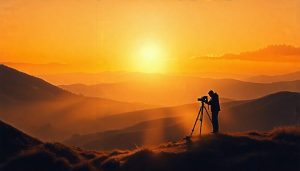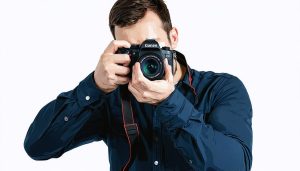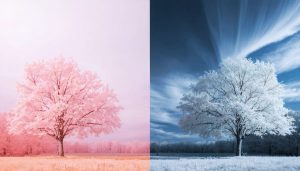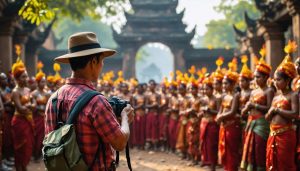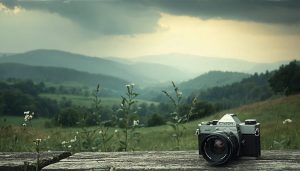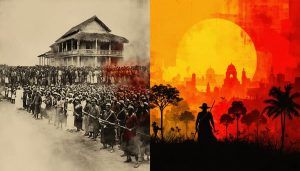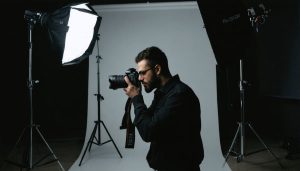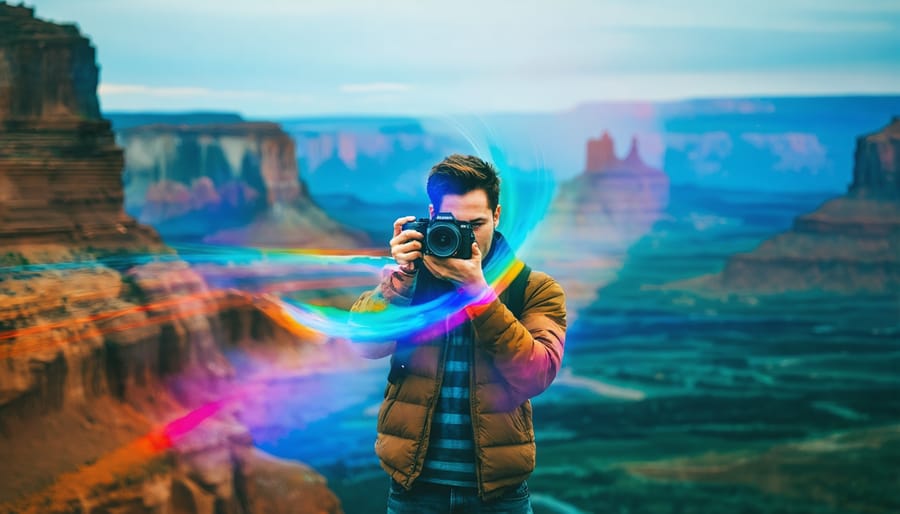
Unlock your creative potential and embark on a transformative journey through the lens. Photography is more than just capturing moments – it’s an art form that allows you to express your unique perspective, tell compelling stories, and evoke powerful emotions. Whether you’re a beginner picking up a camera for the first time or a seasoned pro looking to refine your craft, exploring photography opens up a world of endless possibilities. From mastering the fundamentals of composition and lighting to experimenting with different genres and developing your signature style, this guide will equip you with the knowledge and inspiration to take your photography to new heights. Get ready to unleash your inner artist, push creative boundaries, and see the world in a whole new light. Your photographic adventure starts now.
Mastering the Fundamentals
Exposure Triangle
The exposure triangle is a fundamental concept in photography that refers to the interplay between aperture, shutter speed, and ISO. Each of these settings affects the amount of light that enters the camera and the final exposure of the image. Aperture controls the size of the lens opening, determining the depth of field and the amount of light that reaches the sensor. Shutter speed sets the duration for which the shutter remains open, capturing motion and also influencing exposure. ISO determines the camera sensor’s sensitivity to light, with higher values allowing shooting in low-light conditions but potentially introducing noise. To achieve optimal exposure, photographers must balance these three settings based on the available light and desired creative effect. For example, a wide aperture, fast shutter speed, and low ISO are ideal for capturing action in bright sunlight, while a narrow aperture, slow shutter speed, and high ISO may be necessary for low-light landscapes. Understanding the exposure triangle enables photographers to make informed decisions and take control of their images in various shooting situations. Mastering this interplay is key to unlocking creative possibilities and consistently achieving well-exposed photographs.
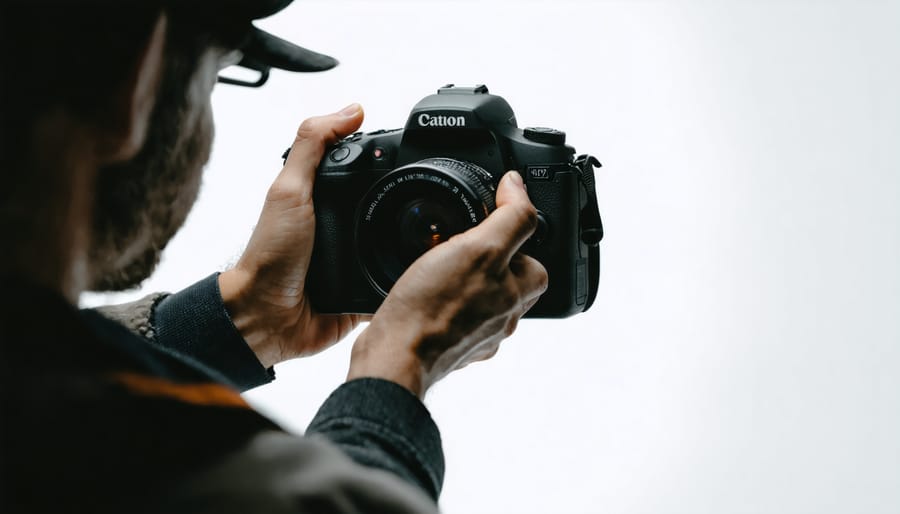
Composition Techniques
Mastering composition is a crucial skill for any photographer looking to create compelling, eye-catching images. By understanding and applying essential composition concepts, you can elevate your photography and communicate your vision more effectively.
One of the most well-known composition techniques is the rule of thirds. Imagine your frame divided into a 3×3 grid. By placing key elements along the gridlines or at their intersections, you create a more balanced, engaging composition that naturally draws the viewer’s eye.
Leading lines are another powerful tool. These are lines within the scene that guide the viewer’s gaze towards the main subject or through the image. They can be explicit, like roads or fences, or implied, like a row of trees or a river. Using leading lines adds depth and dynamism to your shots.
Framing is a technique where you use elements in the foreground to “frame” your main subject, creating a sense of depth and context. This could be shooting through a doorway, between branches, or using an archway. Framing can also help to isolate your subject and make it stand out.
Other composition techniques include symmetry and patterns, which create a sense of harmony and visual interest. Negative space, the empty areas around your subject, can be used to simplify a composition and emphasize your main focal point.
Remember, these are guidelines, not hard rules. The key is to train your eye to recognize potential compositions and experiment with different techniques to find what works best for each scene and your personal style. With practice, you’ll develop an intuitive sense of composition that will shine through in your images.

Experimenting with Genres
Portraits
Capturing compelling portraits relies on a combination of technical skill and the ability to connect with your subject. Start by finding flattering light that highlights your subject’s best features – soft, diffused light works well for most portraits. Consider the background carefully, ensuring it doesn’t distract from your subject. When it comes to posing, guide your subject into natural, comfortable positions that convey the desired mood or emotion.
Engage with your subject throughout the shoot, making them feel at ease and confident. Use prompts or questions to draw out genuine expressions and reactions. Pay attention to small details like hair placement, clothing wrinkles, and body language. Experiment with different angles and perspectives to add visual interest and tell a compelling story.
Above all, focus on capturing the essence of your subject – their personality, emotions, and unique qualities. Compelling portraits are those that reveal something about the person in front of the lens, forging a connection between subject and viewer. With practice, patience, and a willingness to explore, you’ll be well on your way to creating portraits that leave a lasting impact.
Landscapes
Capturing stunning landscape photos requires a combination of technical skills and creative vision. One effective technique is using foreground interest to add depth and draw the viewer’s eye into the scene. Look for interesting elements like rocks, plants, or water features to place in the foreground, creating a more engaging composition. Another key to breathtaking landscape photos is shooting during the golden hour—the soft, warm light just after sunrise or before sunset can transform an ordinary scene into something magical. Experiment with different angles and positions to capture the best light.
Conveying a sense of scale is also crucial in landscape photography. Including recognizable objects or people in the frame can help viewers understand the grandeur of the scene. Alternatively, using a wide-angle lens and incorporating leading lines can create a sweeping, immersive effect. Remember to adjust your aperture and focus settings to ensure both foreground and background elements are sharp. With practice and patience, you’ll be able to create landscape images that transport your audience to the breathtaking locations you’ve captured.
Street Photography
Street photography is all about capturing candid, spontaneous moments that tell a story about everyday life. To excel at this genre, it’s crucial to blend in with your surroundings and become an unobtrusive observer. Dress inconspicuously and use a compact camera or smartphone to avoid drawing attention to yourself. Patience is key – find a bustling location, such as a busy street corner or market, and wait for interesting scenes to unfold.
Anticipate moments by watching for potential interactions or gestures that could make compelling images. Look for strong light and shadow, interesting characters, and juxtapositions that create visual tension. Be respectful of your subjects and their privacy – if someone objects to being photographed, apologize and move on.
Strive to capture authentic emotions and stories in your street photography. Focus on the human element and the small details that give a scene its unique character. Experiment with different angles, framing, and focal lengths to add variety to your shots. Most importantly, trust your instincts and shoot from the heart – the best street photographs often come from a place of genuine curiosity and connection with the world around you.
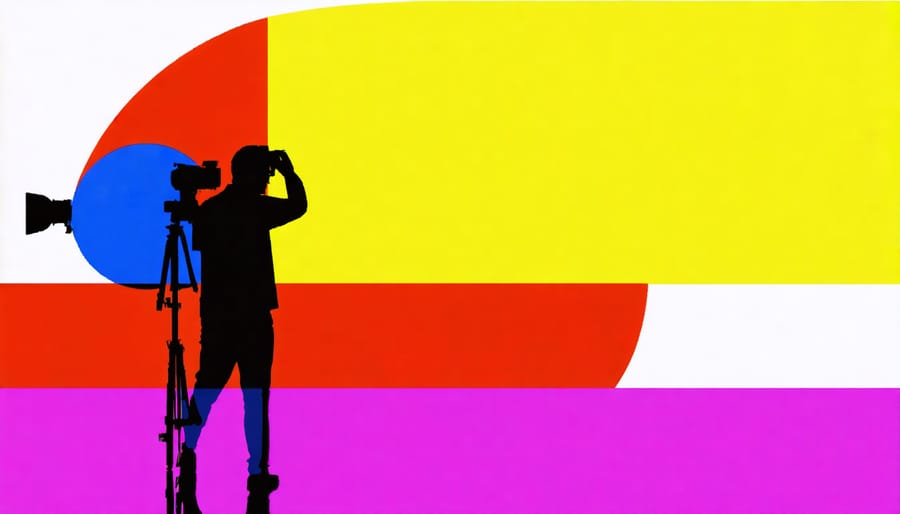
Developing Your Style
Finding Inspiration
Inspiration is the lifeblood of any creative pursuit, and photography is no exception. To keep your passion burning bright, seek out the work of photographers you admire. Study their compositions, techniques, and unique perspectives. Attend photography exhibitions, browse online portfolios, and engage with the community on social media platforms like Instagram and 500px. Don’t limit yourself to just photography, though. Draw inspiration from other art forms, such as painting, sculpture, and film. Notice how artists in these mediums use color, light, and composition to evoke emotion and tell stories.
Beyond the realm of art, find inspiration in your daily life. Take a walk in nature and observe the play of light and shadow, the textures of leaves and bark, and the vibrant colors of flowers. People-watch in a bustling city, capturing candid moments and expressions. Travel to new places, immersing yourself in different cultures and landscapes. Keep a journal to record your experiences, thoughts, and ideas for future shoots.
Remember, inspiration is everywhere – you just need to train your eye to see it. Embrace curiosity, experiment with new techniques, and don’t be afraid to step out of your comfort zone. The more you explore and create, the more you’ll find your own unique voice as a photographer.
Embracing Creativity
Creativity is the lifeblood of photography. As you develop your skills, don’t be afraid to experiment, break the rules, and push the boundaries of your creativity. The most compelling images often come from taking risks and trying new approaches. Start by questioning conventional wisdom and exploring alternative perspectives. What happens if you shoot from an unusual angle, play with motion blur, or use unconventional lighting? Embrace the freedom to make mistakes, as they often lead to unexpected and delightful results.
As you experiment, pay attention to the elements that resonate with you. Are you drawn to bold colors, dramatic contrasts, or minimalist compositions? By identifying your preferences, you can start to develop a distinctive style that sets your work apart. Remember, there’s no right or wrong way to be creative in photography. Trust your instincts, follow your passion, and let your unique vision shine through.
Ultimately, the key to embracing creativity is to approach photography with a sense of curiosity and playfulness. Don’t be afraid to try new things, even if they feel uncomfortable at first. By stepping outside your comfort zone and exploring new creative avenues, you’ll continue to grow and evolve as a photographer, crafting images that truly reflect your unique perspective on the world.
Refining Your Craft
Critiquing Your Own Work
Learning to critique your own photography is a vital skill for growth as a photographer. Start by looking at your photos objectively, as if someone else took them. Assess the technical aspects first: is the exposure correct, the focus sharp, and the composition strong? Then consider the creative elements: does the image convey the intended mood or story? Is it visually interesting and engaging?
When you identify areas for improvement, don’t be discouraged. Instead, view it as an opportunity to learn and refine your skills. Ask yourself what you could have done differently in terms of camera settings, lighting, angle, or timing. Consider how small adjustments could have enhanced the image.
It’s also helpful to compare your work to that of photographers you admire. Study their techniques and think about how you can apply similar approaches in your own unique style. Over time, self-critique will become second nature, allowing you to make more deliberate creative choices in the moment of capturing a photo.
Remember, the goal isn’t perfection but continuous improvement. Embrace the process of critically evaluating your work, and you’ll find yourself becoming a more intentional, skilled photographer with each shot.
Seeking Feedback
Seeking feedback is an essential part of growing as a photographer. Joining photography communities, both online and in-person, can provide invaluable opportunities to share your work and receive constructive criticism from fellow photographers. These communities often host regular meetups, photo walks, or critique sessions where you can get fresh perspectives on your images and learn from others’ experiences.
Attending workshops or enrolling in photography courses is another excellent way to receive guidance and feedback from experienced professionals. These structured learning environments allow you to focus on specific areas of improvement and gain insights into the technical and creative aspects of photography.
Finding a mentor can also be incredibly beneficial for your growth. A mentor is typically an experienced photographer who can offer personalized guidance, critique your work, and help you navigate the challenges you face in your photography journey. Building a relationship with a mentor can lead to long-term growth and development as a photographer.
Remember, seeking feedback is not about seeking validation or praise. It’s about embracing constructive criticism, identifying areas for improvement, and continuously refining your skills. Be open to suggestions, ask questions, and use the feedback you receive to push yourself out of your comfort zone and explore new possibilities in your photography.
Conclusion
Exploring photography is a lifelong journey filled with endless possibilities for growth, creativity, and self-expression. Whether you’re just starting out or are a seasoned pro, remember that the key to success lies in embracing the process with passion and dedication. Experiment with different genres, techniques, and styles to find what resonates with you. Don’t be afraid to step outside your comfort zone and try new things – that’s how you’ll discover your unique artistic voice.
As you continue on this path, always strive to learn and improve. Study the work of photographers you admire, attend workshops and seminars, and seek feedback from peers and mentors. Stay curious, ask questions, and never stop pushing yourself to reach new heights.
Above all, remember that photography is about capturing moments, telling stories, and connecting with the world around you. So get out there and shoot – the more you practice, the more you’ll grow as both a photographer and a visual storyteller. With time, patience, and perseverance, you’ll develop a body of work that reflects your distinctive perspective and leaves a lasting impact on those who view it. Embrace the journey, trust the process, and let your passion guide you every step of the way.

